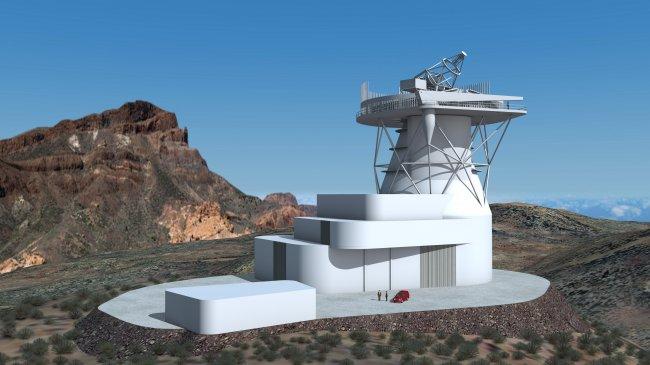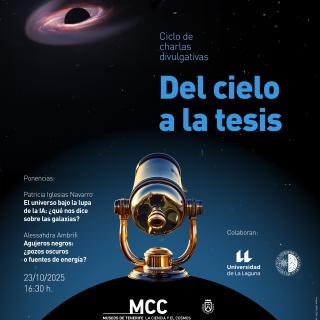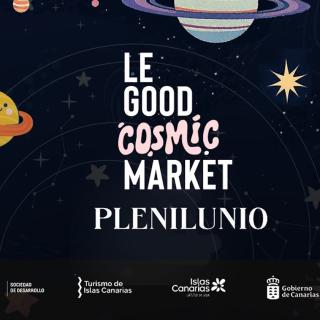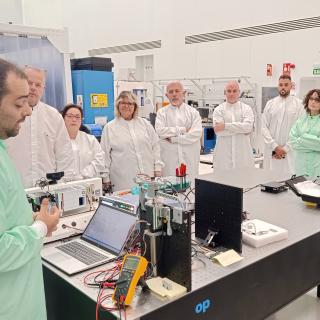The European Commission recently notified the grant of 4 million euros to fund the proposal PRE-EST (Preparatory Phase for the European Solar Telescope). During this phase of the project the final design that will allow the construction of one of the largest solar telescopes in the world will be done. This telescope is included in the ESFRI 2016 route map of the European Union, which identifies the scientific infrastructures of most general interest for Europe. PRE-EST was formally initiated on Saturday April 1st at a meeting between its members in Madrid.
The European Solar Telescope, (EST) is one step nearer to becoming a reality. As the project enters the PRE-EST preparatory phase, the technical office of the project will be set up, with a big team of engineers to manage and supervise the final design and technical specifications of the telescope. This phase, which will last for four years, has the goal of establishing the plans for its construction and operation, as well as preparing the necessary legal and financial agreements among all the members involved in the project.
A further aim is to deepen industrial participation in the initial designs of the telescope and its subsystems, as well as performing a comparative study to determine whether it will finally be sited at the Teide Observatory (Tenerife), or the Roque de los Muchachos Observatory (La Palma). In addition the project will achieve the legal, financial, and technical maturity required to ensure the successful realization of the EST project. The economic assistance from the European Union must be complemented by contributions from the host country and from the members of the project. The contribution of the Autonomous Government (of the Canaries) to PRE-EST from the beginning is essential for the success of the project, and it is expected to be forthcoming in the near future.
Solar magnetism
The EST is a project led by the Instituto de Astrofísica de Canarias IAC) to build the biggest solar telescope in Europe, with a 4m diameter, in one of the observatories in the Canaries. Its principal aim is to study phenomena such as sunspots and outbursts with unprecedented accuracy, and with a resolution of a few tens of km at the solar surface. Thanks to this the EST will let us gain a better understanding of solar magnetic activity, and of the violent eruptions which are accompanied by large quantities of charged material which, for example, can disturb our communications systems.
El IAC también ha coordinado SOLARNET y GREST, dos proyectos europeos que dan continuidad al Estudio de Diseño Conceptual del EST y que persiguen mantener integrada a la comunidad de Física Solar europea de cara al Telescopio Solar Europeo. Para ello cuentan con actividades en red – eventos, escuelas, movilidad de jóvenes- y un programa de acceso a telescopios y bases de datos, así como actividades conjuntas de I+D para desarrollar los aspectos tecnológicos más novedosos que necesita esta infraestructura.
SOLARNET and GREST are two European projects which give continuity to the Conceptual Design Study of the EST and whose aim is to maintain the European solar physics community actively united with respect to the European Solar Telescope. These projects promote web activities-meetings, schools, mobility of young researchers – and a programme of access to telescopes and databases, as well as joint I+D activities to develop the novel technologies which will be required by the telescope.
The PRE-EST proposal, included in the framework programme Horizon 2020, is promoted by the European Association of Solar Telescopes (EAST), whose consortium is composed of 23 research institutions, among them the Instituto de Astrofísica de Canarias and the Instituto de Astrofísica de Andalucía (IAA), of the Consejo Superior de Investigaciones Científicas (CSIC) from 16 European countries.
More information:
- The European Solar Telescope, chosen as a Strategic Scientific Installation for Europe
- JUAN MANUEL BORRERO: “The European Solar Telescope will allow us to improve the quality of the data, and our knowledge of the Sun”
Contact:
- Manuel Collados: mcv [at] iac.es (mcv[at]iac[dot]es)
- Anselmo Sosa: asosa [at] iac.es (asosa[at]iac[dot]es) y 922605203



